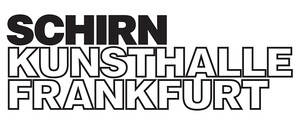Woven Manifestos
September 26, 2019–January 12, 2020
Römerberg
60311 Frankfurt am Main
Germany
T +49 69 2998820
welcome@schirn.de
With her monumental tapestries the artist Hannah Ryggen (1894–1970) created a powerful, politically inspired oeuvre. Working from a small self-sufficient farm on the west coast of Norway, through her artworks she launched attacks on Hitler, Franco, and Mussolini, and made strong statements of support for the victims of fascism and National Socialism. The Schirn Kunsthalle Frankfurt is dedicating a major exhibition to the Swedish-Norwegian artist. On the occasion of Norway being Guest of Honour at the 2019 Frankfurt Book Fair, the Schirn is providing the first in-depth insight into Ryggens oeuvre in Germany. In the about 25 tapestries presented, the artist takes on the fundamental issues in society.
“We can interpret Hannah Ryggen’s monumental tapestries as woven manifestos of her artistic and political convictions, for which she advocated throughout her life. With her oeuvre, the artist presented a position. Again, and again she commented on current political events based on her understanding of herself as a citizen of the world. It is both her humanist vision and her themes that make Hannah Ryggen’s art seem especially topical and relevant to us today,” says Dr. Philipp Demandt, the director of the Schirn Kunsthalle Frankfurt.
The exhibition presents Ryggen’s monumental tapestries and aims to examine how the artist represented a different kind of modernism—one in which elements from folk art and mythology were mixed with contemporary issues.
Dr. Marit Paasche and Esther Schlicht, the curators of the exhibition, explain: “Hannah Ryggen’s oeuvre has been receiving new attention recently in the context of contemporary art, not least as some of her works were presented at dOCUMENTA (13) in 2012. During her lifetime, her tapestries were presented in important art exhibitions in Europe and the United States, but after 1970 they were increasingly categorized as craft and thus never really penetrated the canon of art history. Ryggen personally always regarded her works as fine art. By incorporating contemporary political events into her range of motifs, she gave tapestry as a medium a completely new role. But it is not only this that makes her oeuvre so special. Ryggen developed an entirely unique way of combining fiction, reality, and myths, and she manipulated different pictorial traditions with a rare ease.”
Ryggen’s anti-fascist and anti-war works are in focus of the presentation at the Schirn. Both the number and their large formats testify to the immense creative energy with which the well-read and well-informed artist dealt with national and international events. The Schirn also sheds light on Ryggen’s artistic development as well as inspirations from art and literature that are reflected in her oeuvre. The artist, who initially trained as a painter, started weaving in 1923. She spent the next ten years teaching herself to master all technical aspects. The materials for her weaving work she collected from her farm and the surrounding nature; Ryggen spun the yarn herself and colored the wool with natural dyes obtained from plants. Particular attention in the exhibition is given to Ryggen’s engagement with women’s politics. She repeatedly reflected on the role of women in a male-dominated society. On view is also Ryggen’s iconic work, Vi lever på en stjerne (We Are Living on a Star, 1958), commissioned for Oslo’s Government Quarter. This tapestry was damaged on July 22, 2011, in a bomb attack by the right-wing extremist Anders Behring Breivik. Although repaired by conservators, it still bears a trace, like a scar, in the bottom right corner: a reminder of this assault on democracy.
The exhibition Hannah Ryggen. Woven Manifestos is supported by NORLA – Norwegian Literature Abroad and the Sparebankstiftelsen DNB.
A catalog will be published in an English and a German edition. Edited by Marit Paasche and Esther Schlicht with a foreword by Philipp Demandt, texts by Marit Paasche and Marie Luise Knott, an interview with Ingar Dragset by Esther Schlicht, and a biography and chronology by Johanna Laub, as well as detailed views of the works.
Director: Dr. Philipp Demandt
Curator: Marit Paasche, Oslo, and Esther Schlicht, Schirn Kunsthalle Frankfurt
Press contact: Johanna Pulz (Head of Press/Public Relations): presse [at] schirn.de / T (+49 69) 29 98 82 148
Press material: www.schirn.de/en (texts, images, and films for download under PRESS)



